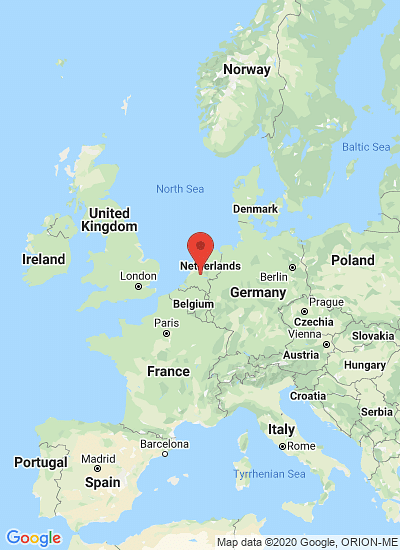Solynta, FOODsniffer chosen for Ag Innovation Showcase.
Solynta, FOODsniffer chosen for Ag Innovation Showcase

Two innovative Dutch agri-food companies, Solynta and FOODSniffer, have been selected to present at the Ag Innovation Showcase in St. Louis Sept. 10-13.
The first company, Solynta, has developed a revolutionary breakthrough in potato breeding technology, unlocking potato’s genetic potential previously deemed inconceivable as well as significantly increasing both efficiency and effectiveness of potato breeding by more than 300%.
Potato is the third biggest food crop in the world (farm gate value over USD30B), and most nutritious and water efficient (FAO). Unlocking the full genetic potential of the potato is hampered by the extremely lengthy and ineffective breeding process. As an example, the variety Russet Burbank is more than 130 years old, and still the largest variety in US. Furthermore, the vegetative reproduction of potato seed is hindered by accumulation of pathogens, physical decline, low reproduction rate, and high storage and transport costs.
Solynta has developed and applied for patents for a new way of potato breeding based on F1 hybrid diploid breeding with homozygous inbred lines that are crossed to obtain F1 hybrid cultivars and propagation by true potato seeds. These parent lines can easily and efficiently be enriched with new traits by (back)crossing and selection. Novel hybrid cultivars can be produced in two to four years.
The novel F1 hybrid cultivars are maintained, produced and propagated by true seed. This allows a nearly unlimited and fast seed multiplication in less than a year, compared to the traditional vegetative propagation, which requires five to 10 years to build a new traditional cultivar. In addition, seeds are principally devoid of pathogens, resulting in high quality potato products, compared to the vegetative propagation of traditional potato cultivars that often results in deteriorated potato seed tubers with reduced economic value. This new breeding paradigm is non-GMO.
Solynta has since 2006 pursued research to develop F1 hybrid potato breeding, proofed the principle in October 2009 and published the first patent application in 2011 and a second one will be published 2012.
Potential clients who profit from the Solynta F1 hybrid breeding technology are found everywhere in the in the potato supply chain: From potato breeding companies via potato propagation companies, farmers, fresh potato marketers, and processors for chips, fries and starch to retailers, restaurants and consumers. Solynta‘s initial focus will be on the breeding companies and starch processors, because here we can most quickly demonstrate the potential of our invention.
Solynta is performing more research to broaden and deepen the patent portfolio. Solynta will generate revenue by contract research, licensing access to this Solynta technology and selling of advanced Solynta breeding material
Economic benefits realized will run at approximately €80 million yearly in 2020 increasing to €700 million in 2030 of which the company expects a 12.5% value share.
FOODsniffer detects with high accuracy
The second Dutch company that will be presenting at the Ag Innovation Showcase is FOODsniffer.
FOODsniffer is a unique and patented biosensor that implements label-free immuno-analysis for the detection of analytes in plant, air, water or animal serum samples. Any analyte for which an immunoassay may be developed is detectable with high accuracy. A few microliters of sample introduced into a low cost and mass producible, single-use silicon chip in an easy to use device measures up to eight analytes. The system is a highly accurate analytical device for use anywhere and by anyone in food production or distribution and even by consumers themselves.

FoodSniffer
FOODsniffer is being developed for applications in the food and agriculture industries.
Work has commenced on the initial stages of the development of commercial applications based on the current version of the biosensor chip. This work is guided by food industry standards safety bodies and is performed in close partnership with major retailers and the largest global analytical laboratory in order to facilitate successful market entry of a versatile and portable system in 18 to 24 months.
For the next version of the chip, the goal is achieve in-field portability. Accordingly, research and development is targeting the integration into the silicon chip itself of the spectroscope and photodetectors and associated a reader for connection to a smartphone for display and transmission of the analysis test results.
In plant agriculture, FOODsniffer will be used to detect infection, pesticide residues or toxins on crop samples. This information will be used for crop management to combat infection scientifically or wait until it is safe to harvest after pesticide applications for example in order to produce crops without excessive levels of residue. The system will also be used to monitor and control post-harvest treatment of crops. FOODsniffer is also being developed to target the detection and control of mycotoxins especially in crops like rice or wheat.
All results of the analysis are automatically transmitted in real-time together with the geolocation, timestamp and relevant user entered data to an internet cloud based analytical data system. This makes data available for statistics and trends which will be used to direct agricultural management and to generate “hot-spots” for example of infection or possibly the use of a disallowed plant protection product.
In animal agriculture, the presence of antibiotics, hormones, infection or genetic diseases or cancer will be detected from a droplet of the animal’s blood. The technology is usable for any analytical test target where a traditional ELISA type immunoassay may be used but where an in-field, and on-site test by non-experts with real-time results are desirable. A particular challenge and one with critical industrial applications, is highly sensitive microbial detection, accordingly this is a topic on which intensive research is planned.
FOODsniffer meets laboratory standards of sensitivity or even exceeds this with parts per billion sensitivity in a device that is very simple to use, smaller and cheaper than a smartphone and with a very low cost per test. This capability promises to bring substantial changes through the massive, convenient and low-cost application of science and precision to many areas of global agriculture.







